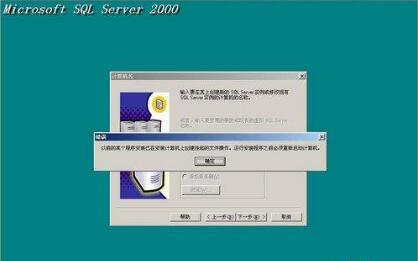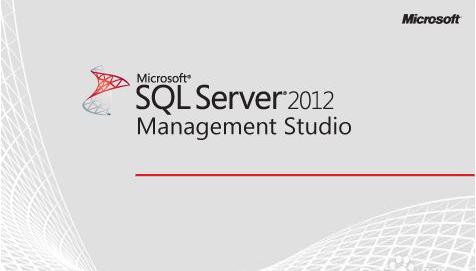Sql Server数据库类似正则表达式的字符处理问题
SQL Serve提供了简单的字符模糊匹配功能,比如:like, patindex,不过对于某些字符处理场景还显得并不足够,日常碰到的几个问题有:
1. 同一个字符/字符串,出现了多少次
2. 同一个字符,第N次出现的位置
3. 多个相同字符连续,合并为一个字符
4. 是否为有效IP/身份证号/手机号等
一. 同一个字符/字符串,出现了多少次
同一个字符,将其替换为空串,即可计算
declare@textvarchar(1000)declare@strvarchar(10)set@text ='ABCBDBE'set@str ='B'selectlen(@text) - len(replace(@text,@str,''))
同一个字符串,仍然是替换,因为是多个字符,方法1替换后需要做一次除法;方法2替换时增加一个字符,则不需要
--方法1declare@textvarchar(1000)declare@strvarchar(10)set@text ='ABBBCBBBDBBBE'set@str ='BBB'select(len(@text) - len(replace(@text,@str,'')))/len(@str)--方法2declare@textvarchar(1000)declare@strvarchar(10)set@text ='ABBBCBBBDBBBE'set@str ='BBB'selectlen(replace(@text,@str,@str+'_')) - len(@text)
二. 同一个字符/字符串,第N次出现的位置
SQL SERVER定位字符位置的函数为CHARINDEX:
CHARINDEX ( expressionToFind , expressionToSearch [ , start_location ] )
可以从指定位置起开始检索,但是不能取第N次出现的位置,需要自己写SQL来补充,有以下几种思路:
1. 自定义函数, 循环中每次为charindex加一个计数,直到为N
if object_id('NthChar','FN')isnotnulldropfunctionNthcharGOcreatefunctionNthChar(@source_stringasnvarchar(4000),@sub_stringasnvarchar(1024),@nthasint)returnsintasbegindeclare@postionintdeclare@countintset@postion = CHARINDEX(@sub_string, @source_string)set@count= 0while @postion > 0beginset@count= @count+ 1if @count= @nthbeginbreakendset@postion = CHARINDEX(@sub_string, @source_string, @postion + 1)Endreturn@postionendGO--select dbo.NthChar('abcabc','abc',2)--4
2. 通过CTE,对待处理的整个表字段操作, 递归中每次为charindex加一个计数,直到为N
if object_id('tempdb..#T')isnotnulldroptable#Tcreatetable#T(source_string nvarchar(4000))insertinto#Tvalues(N'我们我们')insertinto#Tvalues(N'我我哦我')declare@sub_string nvarchar(1024)declare@nthintset@sub_string = N'我们'set@nth = 2;withT(source_string, starts, pos, nth)as(selectsource_string, 1, charindex(@sub_string, source_string), 1from#tunionallselectsource_string, pos + 1, charindex(@sub_string, source_string, pos + 1), nth+1fromTwherepos > 0)selectsource_string, pos, nthfromTwherepos <> 0andnth = @nthorderbysource_string, starts--source_string pos nth--我们我们 3 2
3. 借助数字表 (tally table),到不同起点位置去做charindex,需要先自己构造个数字表
--numbers/tally tableIF EXISTS (select*fromdbo.sysobjectswhereid = object_id(N'[dbo].[Numbers]')andOBJECTPROPERTY(id, N'IsUserTable') = 1)DROPTABLEdbo.Numbers--===== Create and populate the Tally table on the flySELECTTOP1000000IDENTITY(int,1,1)ASnumberINTOdbo.NumbersFROMmaster.dbo.syscolumns sc1,master.dbo.syscolumns sc2--===== Add a Primary Key to maximize performanceALTERTABLEdbo.NumbersADDCONSTRAINTPK_numbers_numberPRIMARYKEYCLUSTERED (number)--===== Allow the general public to use itGRANTSELECTONdbo.NumbersTOPUBLIC--以上数字表创建一次即可,不需要每次都重复创建DECLARE@source_string nvarchar(4000),@sub_string nvarchar(1024),@nthintSET@source_string ='abcabcvvvvabc'SET@sub_string ='abc'SET@nth = 2;WITHTAS(SELECTROW_NUMBER() OVER(ORDERBYnumber)ASnth,numberAS[PositionInString]FROMdbo.Numbers nWHEREn.number <= LEN(@source_string)ANDCHARINDEX(@sub_string, @source_string, n.number)-number = 0----OR--AND SUBSTRING(@source_string,number,LEN(@sub_string)) = @sub_string)SELECT*FROMTWHEREnth = @nth
4. 通过CROSS APPLY结合charindex,适用于N值较小的时候,因为CROSS APPLY的次数要随着N的变大而增加,语句也要做相应的修改
declare@Ttable(source_string nvarchar(4000))insertinto@Tvalues('abcabc'),('abcabcvvvvabc')declare@sub_string nvarchar(1024)set@sub_string ='abc'selectsource_string,p1.posasno1,p2.posasno2,p3.posasno3from@Tcrossapply (select(charindex(@sub_string, source_string)))asP1(Pos)crossapply (select(charindex(@sub_string, source_string, P1.Pos+1)))asP2(Pos)crossapply (select(charindex(@sub_string, source_string, P2.Pos+1)))asP3(Pos)
5. 在SSIS里有内置的函数,但T-SQL中并没有
--FINDSTRING in SQL Server 2005 SSISFINDSTRING([yourColumn],"|", 2),--TOKEN in SQL Server 2012 SSISTOKEN(Col1,"|",3)
注:不难发现,这些方法和字符串拆分的逻辑是类似的,只不过一个是定位,一个是截取,如果要获取第N个字符左右的一个/多个字符,有了N的位置,再结合substring去截取即可;
三. 多个相同字符连续,合并为一个字符
最常见的就是把多个连续的空格合并为一个空格,解决思路有两个:
1. 比较容易想到的就是用多个replace
但是究竟需要replace多少次并不确定,所以还得循环多次才行
--把两个连续空格替换成一个空格,然后循环,直到charindex检查不到两个连续空格declare@strvarchar(100)set@str='abc abc kljlk kljkl'while(charindex(' ',@str)>0)beginselect@str=replace(@str,' ',' ')endselect@str
2. 按照空格把字符串拆开
对每一段拆分开的字符串trim或者replace后,再用一个空格连接,有点繁琐,没写代码示例,如何拆分字符串可参考:“第N次出现的位置”;
四. 是否为有效IP/身份证号/手机号等
类似IP/身份证号/手机号等这些字符串,往往都有自身特定的规律,通过substring去逐位或逐段判断是可以的,但SQL语句的方式往往性能不佳,建议尝试正则函数,见下。
五. 正则表达式函数
1. Oracle
从10g开始,可以在查询中使用正则表达式,它通过一些支持正则表达式的函数来实现:
Oracle 10 gREGEXP_LIKEREGEXP_REPLACEREGEXP_INSTRREGEXP_SUBSTROracle 11g (新增)REGEXP_COUNT
Oracle用REGEXP函数处理上面几个问题:
(1) 同一个字符/字符串,出现了多少次
selectlength(regexp_replace('123-345-566','[^-]',''))fromdual;selectREGEXP_COUNT('123-345-566','-')fromdual;--Oracle 11g
(2) 同一个字符/字符串,第N次出现的位置
不需要正则,ORACLE的instr可以直接查找位置:
instr('source_string','sub_string' [,n][,m])
n表示从第n个字符开始搜索,缺省值为1,m表示第m次出现,缺省值为1。
select instr('abcdefghijkabc','abc', 1, 2) position from dual;
(3) 多个相同字符连续,合并为一个字符
select regexp_replace(trim('agc f f '),'\s+',' ') from dual;
(4) 是否为有效IP/身份证号/手机号等
--是否为有效IPWITHIPAS(SELECT'10.20.30.40'ip_addressFROMdualUNIONALLSELECT'a.b.c.d'ip_addressFROMdualUNIONALLSELECT'256.123.0.254'ip_addressFROMdualUNIONALLSELECT'255.255.255.255'ip_addressFROMdual)SELECT*FROMIPWHEREREGEXP_LIKE(ip_address,'^(([0-9]{1}|[0-9][0-9]|1[0-9][0-9]|2[0-4][0-9]|25[0-5])\.){3}([0-9]{1}|[0-9][0-9]|1[0-9][0-9]|2[0-4][0-9]|25[0-5])$');--是否为有效身份证/手机号,暂未举例
2. SQL Server
目前最新版本为SQL Server 2017,还没有对REGEXP函数的支持,需要通用CLR来扩展,如下为CLR实现REG_REPLACE:
--1. 开启 CLREXECsp_configure'show advanced options','1'GORECONFIGUREGOEXECsp_configure'clr enabled','1'GORECONFIGUREGOEXECsp_configure'show advanced options','0';GO
2. 创建 Assembly
--3. 创建 CLR 函数CREATE FUNCTION [dbo].[regex_replace](@input [nvarchar](4000), @pattern [nvarchar](4000), @replacement [nvarchar](4000))RETURNS [nvarchar](4000) WITH EXECUTE AS CALLER, RETURNS NULL ON NULL INPUTASEXTERNAL NAME [RegexUtility].[RegexUtility].[RegexReplaceDefault]GO--4. 使用regex_replace替换多个空格为一个空格select dbo.regex_replace('agc f f ','\s+',' ');
注:通过CLR实现更多REGEXP函数,如果有高级语言开发能力,可以自行开发;或者直接使用一些开源贡献也行,比如:http://devnambi.com/2016/sql-server-regex/
小结:
1. 非正则SQL语句的思路,对不同数据库往往都适用;
2. 正则表达式中的规则(pattern) 在不同开发语言里,有很多语法是相通的,通常是遵守perl或者linux shell中的sed等工具的规则;
3. 从性能上来看,通用SQL判断 > REGEXP函数 > 自定义SQL函数。
总结:以上所述是小编给大家介绍的SqlServer类似正则表达式的字符处理问题,希望对大家有所帮助,如果大家有任何疑问请给我留言,小编会及时回复大家的。



